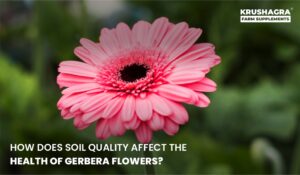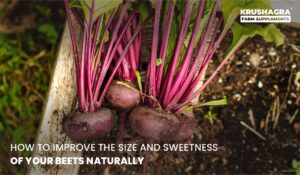The most natural way of fixing atmospheric nitrogen and using it for crop development is through the plantation of leguminous crops. These plants have nodules in their roots that contain N2-fixing bacteria. They are widely used in crop rotation to increase soil fertility due to the same reason and yet require fertilizers that can catalyze their productivity more. Rhizobium, in that case, is the most preferred biofertilizer used for legume crops, which is commonly implemented for its nitrogen-fixating attributes.
What is nitrogen fixation?
The Earth’s atmosphere consists of approximately 78% nitrogen. It is present in such a humongous presence in the air but of no use to living beings in its inert diatomic form. Yet is one of the most important constituents on the planet that is necessary for the proper functioning of cells in all living organisms. The amino acids that serve proteins are made up of these nitrogen molecules.
Humans rely on plants for this nitrogen but plants too require this gas for their photosynthesis process and chlorophyll contents. They cannot absorb N2 directly. So these plants take the help of microorganisms present in the soil and transform non-reactive dinitrogen into digestible compounds like ammonia (NH3), nitrites, and nitrates. This process is known as nitrogen fixation.
It is the conversion activity necessary for healthy crop development because otherwise, nitrogen-deficient plants can turn yellowish, won’t have a fulfilling growth, and deliver smaller fruits and flowers.
How legumes are capable of performing this activity?
Let’s understand the characteristics of these crops in detail to know what makes them one of the largest contributors to organic farming and how in collaboration with rhizobium, they flourish and grow well.
Legumes: Biological Nitrogen Fixing Agents
Most simplistically, legumes are fruits or seeds of the plants in the pea family. These are produced for human consumption and can be utilized as livestock forage, silage, or organic manure. They are recognized as an important source of protein, dietary fiber, and carbohydrates. Soybean, peanuts, tamarind, beans, and clover are some examples of legumes.
As mentioned earlier, the root nodules of these plants have symbiotic N2-fixing bacteria, which makes them a useful asset for farmers. They are cultivated mostly under semi-arid or arid climatic conditions. In India, the largely grown legumes include grams, peanuts, soya beans, and lentils. These crops are mostly produced in states like Madhya Pradesh, Rajasthan, Maharashtra, Uttar Pradesh, Karnataka, Gujarat, Andhra Pradesh, Jharkhand, Telangana, and Tamil Nadu.
How biological nitrogen fixation occurs through legumes?
Legumes have a symbiotic relationship with a diazotrophic bacteria named rhizobia. It is a free-living aerobic soil bacterium. In this relationship, the roots of legumes provide shelter for rhizobia. For legumes, rhizobia break N2 into ammonia. In this process, the legumes release flavonoids from their roots and attract this soil bacteria towards the root hairs.
These root hairs then capture the rhizobia and curl around them. It then moves downwards to the roots and forms the nodules. Post formation of these swellings, the bacteria then employs nitrogenase enzymes to break dinitrogen into ammonia. Legumes utilize this ammonia to synthesize proteins for plant growth and the photosynthesis process.
They release it into the soil through broken nodules once dead. The bacteria consume plant-produced carbohydrates and intake carbon. This kind of symbiotic relationship is therefore termed mutualism since its beneficial for both parties. Rhizobium also improves access to other nutrients and empowers the crop’s resistance to pathogens, pests, and abiotic stresses.
Benefits of Leguminous crops in Organic farming
Environment-friendly and cost-effective – Biological nitrogen fixation is done with the help of these crops and it is way more profitable for farmers as well as nature because there is no inclusion of artificial or industrial methods that can cause harm to the environment.
These plants play a significant role in diversifying farming systems on organic farms, help in the reduction of soil erosion, improve soil fertility when used as green manure as well as improvises water holding capacity.
Enhancing crop productivity – Legumes play a significant role in crop rotation as well. As most of the excess fixed nitrogen is entirely used by the second relay crop or soil decreases the nitrogen demand for the next crop. Legumes can also be used as forage and grazing material for poultry and cattle.
They are helpful in weed management with crop residues as well as they attract pollinators during the crop flowering period. These versatile qualities allow them to be utilized in biological systems through crop rotation, intercropping, level cultivation, and cover crops.
Biofertilizer for leguminous crops
Rhizobium is the most preferred biofertilizer for legumes. It is applied as a seed treatment in soils for these crops. Even though the legumes can conduct nitrogen fixation with the help of rhizobium present in the soil, inoculating them with promiscuous rhizobia can achieve substantial increases in legume nodulation, biomass yield, nitrogen fixation, and post-crop soil nitrate levels.
Multilegume biofertilizers prove to be one of the most valuable contributions to sustainable farming because choosing the correct inoculant group for a particular legume host is a tedious job. Successful formation of nodules in the leguminous crops by rhizobium mainly depends on the availability of a compatible stain for a particular legume. The rhizobium population in the soil is dependent on the presence of legume crops in the field.
In the absence of legumes, the population of rhizobium in the soil diminishes. Since rhizobium is a crop-specific biofertilizer, one should ensure that this biofertilizer is only used for legume crops. Krushagra Nitfit RB fits well as an appropriate product for these leguminous plants. It serves the environment and is affordable for farmers who look forward to opting for organic cultivation practices. For more details about the product, and our mission to inculcate these sustainable solutions, visit the site and contact us for further inquiries.






